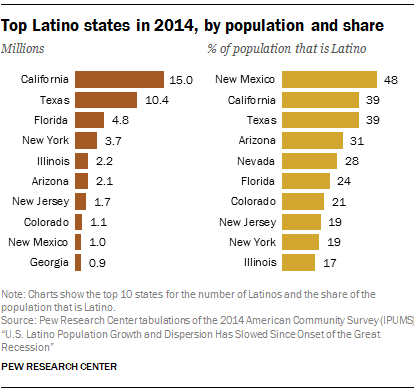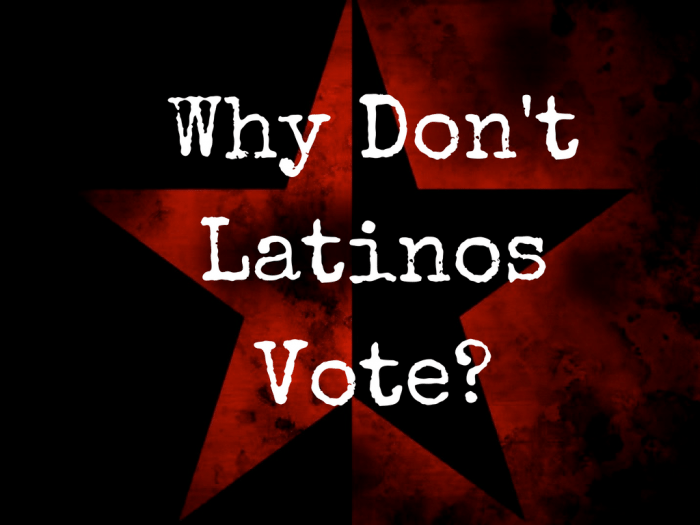An honest truth of the 2016 presidential election is that there is no such thing as the Latino vote in the United States.
The continued failure of the community to flex its political muscle election after election is the result of multiple factors, some imposed by the political system itself but others are self-inflicted. Overall, the 2016 election proved Governor Jan Brewer correct: Latinos did not come out to vote this year, allowing for Donald Trump to win. His victory is partly our fault, and accepting our responsibility for his rise will allow us to reassess where we stand as a community, as we now face the wrath of Trumpian politics in America.
Democrats and Republicans failed the Latino community. The Democrats made the fatal mistake that simply making Trump out as the Latino boogeyman was going to result in historic turnout. In hindsight, we should not be surprised that a segment of Latinos voted for Trump (even with his racism) because they did not associate themselves with the comments made by Trump. Latinos with established citizenship, living in Latino-majority communities outside of states like California or Nevada (see Florida) and/or Latinos of high socioeconomic status were more likely to dismiss Trump’s comments on Mexicans because “he wasn’t describing me.” Naturally, Obama’s record deportations and Hillary Clinton’s involvement in the 2009 Honduras coup did not help the Democrats image among Latinos, and probably led to less enthusiasm for Democrats in 2016.
As for the Republicans, the party made no major outreach campaign to cater to Latino voters because they gambled on low Latino voter turnout. Initially, their strategy nearly backfired, as exemplified by their failed attempt to throw out the early vote ballots in Nevada. However, the initial “Latino surge” that occurred across the country during the early vote period failed to materialize on Election Day. The case of the Cuban-American vote in Florida is of note here, considering that more than half of Cuban American voters supported Trump.


In his victory speech, Senator Marco Rubio did not thank the Latino community for his victory, but rather the Cubans, Colombians, Venezuelans and other groups that propelled him to victory.
By accident or by design, the Republicans stumbled upon the correct way to win the Latino vote: by de-emphasizing the cultural Latino commonality and emphasis the flags of origin of these voters.
In addition, the Electoral College dilutes the potential impact of the Latino vote. Currently, the five states with the largest Latino populations are California, Texas, Florida, New York and Illinois, and yet only Florida was a true battleground state. Of course, other battleground states such as Colorado and Nevada had smaller but significant Latino populations that could swing the state in favor of one party over the other. However, for Latino voters living in states that won’t have a significant impact on the Electoral College, such as New York, the incentives for voting are not there.


We must also discuss the self-inflicted wounds created by our own community. Voter turnout among Latinos has hovered near the 50% range in the last three presidential elections. Turnout for midterm elections is even worse, reaching an all-time low of 27% in 2014, according to the Pew Research Center. Our vote as a Latino community also suffers from internal fragmentations based on nationality, race, citizenship acquisition, education and socioeconomic status, to name a few. I argue that the nationality fragmentation is the most powerful, as it could explain why 20-30% of Latinos were willing to support a candidate that said disparaging comments about Mexican Americans. Unfortunately, too many Latinos played the dissociation game when in reference to the comments made by Trump.
We must also discuss the paradoxical support for voter ID laws among Latinos. In a 2012 study, Pew reported that over 70% of Latinos supported voter ID laws. The result of the survey could be affected by the state residence of the voter, but such level of support demonstrates the need for increased civic education and awareness of the negative impact voter ID laws have on the Latino community as a whole, especially in states where these laws can have a significant effect on Latino voter turnout.
Given the 2016 election, the Latino community needs to reassess its political goals moving forward. An unresponsive two-party system, an Electoral College that dilutes the power of our voting bloc, the fragmentation of our community’s vote and the lagging voter turnout numbers have hampered our efforts for greater political representation and power. If we are to achieve the common goals we have for our community, we need to move beyond simply blaming the systems of angry white racist Trump voters and determine why, after multiple opportunities, our vote has failed to gain us power. The short-term answer is, there is no longer such thing as a Latino vote. The long-term answer depends on which political agenda the fragmented Latino vote wants to support and elect into office.
***
Danny Navarro was an Obama for America field organizer during the 2012 campaign. He tweets from @NavarroDanny9.



